Varied Garden Produce
Midsummer. It’s the heart of gardening season as millions of Americans proudly bring tomatoes, beans, squash, and a host of other crops into the kitchen from the backyard garden.
Many don’t realize they ignore eating a typical garden’s hidden delightful food.
Most gardeners spend hours pulling and hoeing incredibly common and prolific garden weeds, only to toss them out. They make delicious food.
Here are our favorite “weeds” to eat
Lambsquarters. The young leaves of this persistent and fast-growing plant are delicious in salads. Or they can be boiled and used like spinach.
Amaranth or Pigweed. Sometimes called wild beet. Almost as common as lambs quarters, the young leaves can also be used similarly to spinach.
Purslane. This ground-hugging hot weather weed is a commercial crop in India. Young leaves and stems are delicious raw. They can also be boiled or even pickled. Grit tends to cling to purslane so rinse it thoroughly.
- A full pot of raw Lamb’s Quarters cooks down to a few fork fulls of this nutritious potherb.
- The Latin name is Portulaca oleracea
Crops with Rarely Harvested Edible Parts
Our favorites are
Beet greens. Beets are the same species as Swiss chard but the leaves tend to toughen as the plant grows. We use young beet leaves as we would chard.
Sweet Potato leaves. We haven’t tried these yet but will this summer. From what we’ve read they are delicious steamed and can be eaten raw.
Squash and pumpkin blooms. These plants usually produce more blooms than they need. We sparingly pick and steam them for a colorful yellow vegetable.
Carrot tops. Our master gardener friend thins carrots and uses the tops in pesto. We tried this in a pesto that a friend shared. Delicious!
Radish tops. Mix a few young leaves into salads. They’re spicy and add zest to other greens.
- Beets are a cousin to Swiss Chard
- Sautee or mix in a salad
- Add to pesto!
Resources
Whenever eating a new plant for the first time, make sure the identification is correct. It’s smart to identify a wild plant from at least three sources. These might include an Internet search, a wild foods book, or identification by a trusted wild food or garden expert. One online source is www.wildedible.com. Once you’re certain it’s edible, eat a small helping the first time to make sure you like it and it likes you.

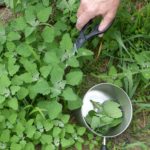

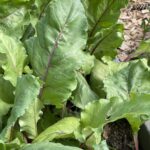
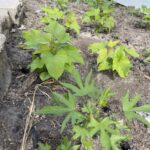
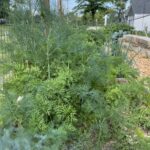
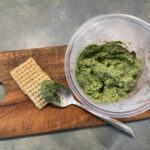

We have been enjoying purslane as a topper to our salads the last few weeks–crunchy and delicious and a touch of elegance to the salad bowl. It makes a nice living mulch in our greens patch.
Clarice, this is great to know! Gathering “wild” foods from places away from pollutants like car fumes and lawn sprays can add to our diet in healthy ways. And, many cultures as you know eat what Americans toss out or kill with herbicides.
How about dandelions and milkweed leaves?
Yes, many wild plants have edible parts, especially when young. As plants get older seasonally, they often toughen. As usual, always confirm knowing a plant with at least three valid sources. Then, only eat a small amount at first to determine if your body accepts the new food.